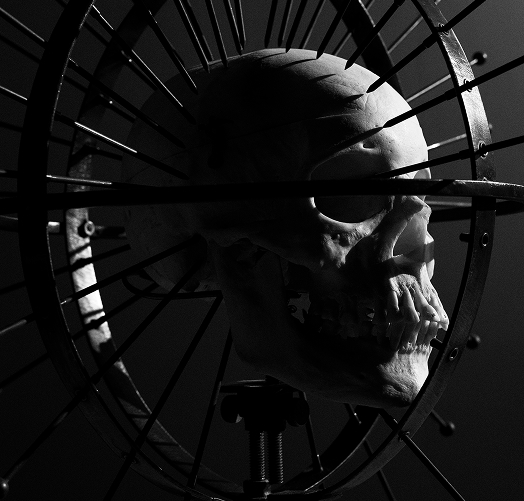How Computer-Aided Planning in Facial Feminization Surgery isn’t all that it is Touted to be: SHOULD PATIENTS RELY ON VIRTUAL SURGICAL PLANNING FOR FFS SURGERY?
A number of surgeons have begun to utilize virtual surgical planning, exact printed anatomical models, a Sonopet, and ultrasonic bone tools in Facial Feminization Surgery. Is it hype? Does it represent reliable outcomes? Should you trust it?
During many of my consultations in the office, I am asked about various “new” technologies being used in facial feminization surgery. Many new technologies are used as marketing tools by surgeons who wish to obtain more business in another niche area of medicine with only a few truly experienced surgeons in this field.
Virtual Surgical Planning or computer-aided planning in surgery has been a very large advancement in craniofacial surgery. However, it has very specific areas of efficacy – there are a few areas where it is extremely helpful, and other areas where it is almost a complete waste of the patient’s money. In fact, it can slow the operation down leading to increased cost and poorer outcomes for patients.
AN EXPLANATION OF VIRTUAL SURGICAL PLANNING – UPSIDE/DOWNSIDE
Virtual Surgical Planning is a tool where you can simulate bone movements or procedures on a three-dimensional planning software. This software was initially developed within the realm of craniomaxillofacial surgery for the use of orthognathic surgery. Orthognathic surgery is essentially bite correction surgery. The planning of these operations when I was initially trained involved taking models of the teeth, and then planning the operation on paper and performing “mock” surgery on models of the teeth. You would then create surgical jigs out of acrylic or other light-activated curing materials in order to “calibrate” the surgery. Precision was key. The old way was quite accurate, however, it was very time-consuming. Virtual surgical planning allows us to do the exact same thing, however, it occurs much more quickly and the precision is increased slightly. The cost of materials and equipment is slightly higher because of the need for three-dimensional printers. This was a great use in craniomaxillofacial surgery.
There are other uses for this technology as well. Virtual surgical planning is well used with patient-specific implants where a patient for instance has an asymmetry and needs an implant that will improve or restore symmetry. This is something that cannot be done very well any other way. This is most effective for a generally singular issue with many of the other factors of surgery constant.
FFS is an extremely intricate surgery that has hundreds of consideration factors – often occurring during the procedure. For instance, many of the outcomes during facial feminization surgery cannot be precisely predicted based on exact bone movements. What that means is that you may make a very precise change in the bone, but then you need to look at the patient and decide – based on the overall bony/tissue/muscle structure, symmetry, and patient’s goals – do you need to do more or less or make minor changes in the overall plan – and this needs to be done “on the spot”. Knowing that this is our reality – for the surgeon and our patient, it negates the time spent on “precision planning” via computer. In addition, such planning for facial feminization surgery adds significant cost and expense to the operation without much if enough benefit; we feel we can do this planning with a perfect set of radiographic imaging and perfect measurements. That is one of the many reasons our consultations are so thorough as well as our resulting surgical planning.
LET’S TALK MODELING
Exact 3D anatomical models of patients are great props for use in the office while showing a patient their anatomy. It is possible to create surgical “guides” from these models and these guides in theory tell you where to cut when doing surgery. However, they are no more helpful to a surgeon in surgery than looking at those images on a computer screen and are not useful if the surgeon who is designing the guides doesn’t understand the skeletal characteristics of a feminine face.
TOOLS ARE ONLY AS GOOD AS THE SURGEON USING THEM
As for ultrasonic bone cutting tools, this technology is like all of the others; It has very occasional applications but is not a one size fits all solution for surgery of the facial bones. Piezoelectric or ultrasound cutting bone tools are essentially similar to a basic surgical saw, only the amplitude of the oscillations are much smaller and the frequency is much higher. They still create heat and still have the capacity to burn the bone which you are working on. These tools do tend to be a little safer around the soft tissue, however, they are incredibly slow and dramatically increase the surgical time.
The sonopet is a great tool for beginning surgeons who are not confident with their tools and or have less than good surgical technique. One example of this is when I did a direct comparison of two genioplasties. I did one genioplasty during an OR day with a traditional saw and timed how long it took to “cut the bone”. I did another with the sonopet for a comparison. The time it took to cut the bone with the traditional bone saw was about 45 seconds. The time it took to cut the chin with the sonopet was about 12 minutes. It was literally 16 times slower than the traditional saw, and there were burned areas of bone where the sonopet had created too much heat.
There are exceptions — the Sonopet is very good at cutting very thin bones in delicate places. For example, when one is performing a le fort Osteotomy to move the “mid-face”. There are often interferences of bone at the skull base where there are some very delicate blood vessels which if injured could cause life-threatening bleeding. I have found great utility in these areas for the sonopet where other tools would be less ideal.
CONCLUSION – ARE YOU CERTAIN?
Every tool and technique has its place in the arsenal of a surgeon. However, these tools should not be used as blanket marketing tools for inexperienced surgeons to draw patients into their practice and try and increase patient’s confidence in their surgery. Patients do not always have the medical acumen to understand when they are being marketed too and some of these tools can detract from the actual skill of the surgeon. Be sure to ask the right questions, don’t be “dazzled” and ensure that your selected surgeon has the appropriate skills for your desired outcome. Hopefully, this piece will shed some light on some of these current topics.
Categories:
- Craniofacial
- DLM FAQ
- Facial Feminization Surgery
- Facial Implants
- Facial Masculinization Surgery
- Injectables
- Jaw Surgery
- Non-Surgical
- Nose
- Office News
- Plastic Surgery
About Deschamp- Braly Clinic:
We are privileged to be a part of a journey where the destination is a place that brings you a renewed sense of happiness. We are here to give you our very best. Most importantly, we are here to share in your sense of relief and joy as the dressings are removed.









